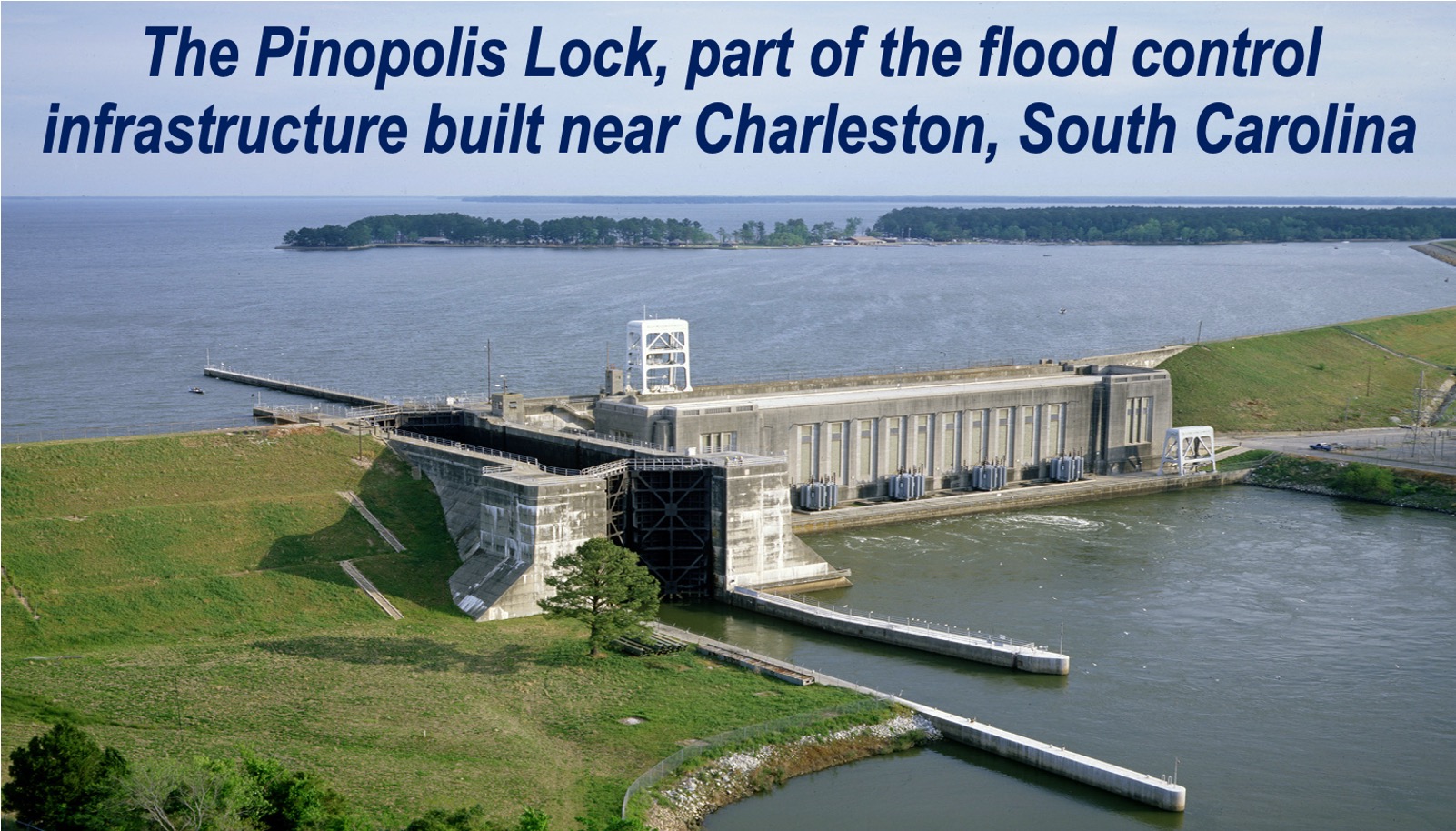A recent study has revealed that constructing dams as coastal flood defenses might, in some cases, lead to more severe flood conditions.
The researchers, from the University of Alaska Fairbanks, the California Polytechnic State University, and the University of South Carolina, wrote about their study and findings in the Journal of Geophysical Research: Oceans (citation below). The study focused on the impact of dams built in coastal estuaries, where rivers meet the tides of the sea.
These large-scale projects are becoming more common worldwide, partly as a response to the growing threats of stronger storms, rising sea levels, and saltwater intrusion, all exacerbated by climate change.
Study Focused on Charleston Harbor
By examining historical data from Charleston Harbor in South Carolina, which stretches back over a century, the researchers found that dams might not always reduce flood risks.
In fact, they discovered that flood risks could either increase or decrease depending on the length of a storm surge and how water flows through the area.
Lead author Steven Dykstra, an assistant professor at the University of Alaska Fairbanks, explained:
“While we often expect storm surges to weaken as they move inland, the shape of the basin can actually cause them to grow stronger.”
Estuaries, which typically have a funnel-like shape that narrows inland, change shape after the construction of a dam.
The dam acts as an artificial barrier that reflects the surge of water, potentially amplifying its effects. Dykstra likened this to waves splashing in a bathtub, where certain frequencies can make water spill over the edges.

Researchers Tested 23 Other Estuaries
After analyzing Charleston Harbor, the researchers used computer simulations to test their findings at 23 other estuaries in various global regions, including both dammed and natural systems like Cook Inlet in Alaska.
The results confirmed that the basin shape, and the shortening effect of dams, play a crucial role in determining how storm surges behave inland. In some cases, waves grow larger rather than shrinking.
Flooding May Occur Far Inland
The study also highlighted that areas far from the coast can still be affected by man-made coastal infrastructure. In Charleston, the highest storm surges occurred more than 50 miles inland.
Dykstra said:
“People often don’t realize that they are within a zone impacted by coastal activity. As sea levels rise, communities far inland are discovering they aren’t immune to coastal impacts — and it often becomes clear when a major flood occurs.”
Citation
Dykstra, S. L., Talke, S. A., Yankovsky, A. E., Torres, R., & Viparelli, E. (2024). Reflection of storm surge and tides in convergent estuaries with dams, the case of Charleston, USA. Journal of Geophysical Research: Oceans. https://doi.org/10.1029/2023JC020498
